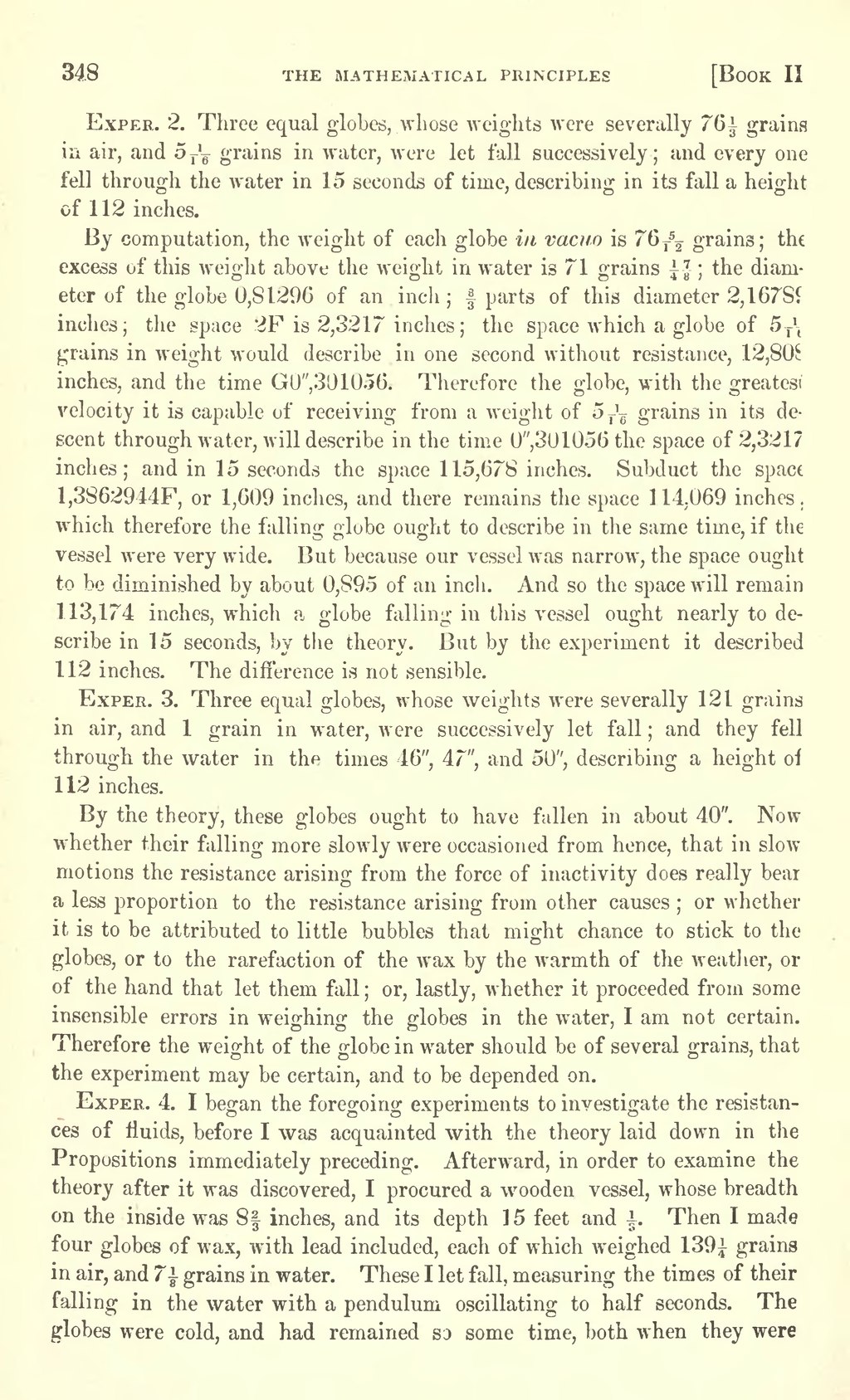Exper. 2. Three equal globes, whose weights were severally 76⅓ grains in air, and 5 grains in water, were let fall successively; and every one fell through the water in 15 seconds of time, describing in its fall a height of 112 inches.
By computation, the weight of each globe in vacuo is 76 grains; the excess of this weight above the weight in water is 71 grains; the diameter of the globe 0,81296 of an inch; parts of this diameter 2,16789 inches; the space 2F is 2,3217 inches; the space which a globe of 5 grains in weight would describe in one second without resistance, 12,808 inches, and the time G0″,301056. Therefore the globe, with the greatest velocity it is capable of receiving from a weight of 5 grains in its descent through water, will describe in the time 0″,301056 the space of 2,3217 inches; and in 15 seconds the space 115,678 inches. Subduct the space 1,3862944F, or 1,609 indies, and there remains the space 114.069 inches, which therefore the falling globe ought to describe in the same time, if the vessel were very wide. But because our vessel was narrow, the space ought to be diminished by about 0,895 of an inch. And so the space will remain 113,174 inches, which a globe falling in this vessel ought nearly to describe in 15 seconds, by the theory. But by the experiment it described 112 inches. The difference is not sensible.
Exper. 3. Three equal globes, whose weights were severally 121 grains in air, and 1 grain in water, were successively let fall; and they fell through the water in the times 46″, 47″, and 50″, describing a height of 112 inches.
By the theory, these globes ought to have fallen in about 40″. Now whether their falling more slowly were occasioned from hence, that in slow motions the resistance arising from the force of inactivity does really bear a less proportion to the resistance arising from other causes; or whether it is to be attributed to little bubbles that might chance to stick to the globes, or to the rarefaction of the wax by the warmth of the weather, or of the hand that let them fall; or, lastly, whether it proceeded from some insensible errors in weighing the globes in the water, I am not certain. Therefore the weight of the globe in water should be of several grains, that the experiment may be certain, and to be depended on.
Exper. 4. I began the foregoing experiments to investigate the resistances of fluids, before I was acquainted with the theory laid down in the Propositions immediately preceding. Afterward, in order to examine the theory after it was discovered, I procured a wooden vessel, whose breadth on the inside was 8⅔ inches, and its depth 15 feet and ⅓. Then I made four globes of wax, with lead included, each of which weighed 139¼ grains in air, and 7 grains in water. These I let fall, measuring the times of their falling in the water with a pendulum oscillating to half seconds. The globes were cold, and had remained so some time, both when they were





